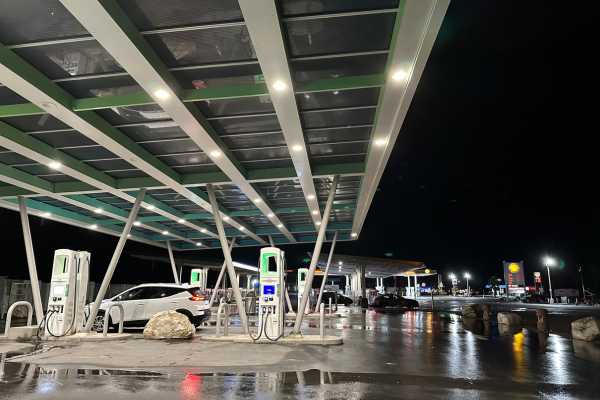Table of Contents
- Introduction
- Current Statistics on Electric Vehicles
- Conclusion
- Frequently Asked Questions.
Introduction:
In the realm of transportation, the shift towards sustainability has gained substantial momentum, with electric vehicles (EVs) emerging as a cornerstone of this movement. The United States, a significant player in the automotive industry, has been witnessing a notable surge in the adoption of EVs.
As we step into the year 2024, the electric vehicle (EV) revolution in the United States is not just a faint whisper but a resounding call for change in the automotive industry. The journey towards sustainable transportation has accelerated, with electric vehicles at the forefront of this transformation. In the wake of environmental concerns, technological advancements, and shifting consumer preferences, the landscape of EVs in the U.S. has undergone remarkable evolution.
In this article, we delve into the intricate web of statistics, trends, and developments surrounding electric vehicles in the United States in 2024, shedding light on the profound impact they have on our roads, our environment, and our future. From sales figures to infrastructure expansion, from government incentives to environmental implications, we unravel the layers of the electric vehicle phenomenon, painting a vivid picture of the driving force behind the wheels of change.
As we delve into the statistics surrounding EVs in the U.S. in 2024, it becomes evident that these eco-friendly alternatives are not just a fleeting trend but a promising future of transportation.
Current Statistics on Electric Vehicles in United States
1. Growth of Electric Vehicles:

- The adoption of electric vehicles in the United States has experienced exponential growth in recent years, with 2024 marking a pivotal moment in this trajectory.
- Sales of electric vehicles have been steadily increasing, reflecting a shift in consumer preferences towards sustainable transportation options.
- According to recent data, the number of electric vehicles sold in the U.S. in 2024 has surpassed previous records, showcasing the growing demand for these vehicles.
2. Electric Vehicle Models and Diversity:
- One notable aspect of the EV landscape in the U.S. in 2024 is the increasing diversity of electric vehicle models available to consumers.
- Major automakers have expanded their EV offerings, introducing a wide range of models across different vehicle segments, including sedans, SUVs, and trucks.
- This proliferation of electric vehicle options caters to varying consumer needs and preferences, making EVs more accessible and appealing to a broader audience.
3. Charging Infrastructure:

- The availability and accessibility of charging infrastructure play a crucial role in facilitating the widespread adoption of electric vehicles.
- In 2024, significant efforts have been made to expand the charging infrastructure network across the United States, addressing one of the primary concerns of potential EV buyers.
- Public charging stations have become more prevalent, with increased investments from both government entities and private companies, contributing to the growth of EV adoption.
4. Government Incentives and Policies:

- Government incentives and policies have been instrumental in incentivizing the adoption of electric vehicles in the United States.
- In 2024, various federal and state-level incentives, such as tax credits and rebates, continue to encourage consumers to make the switch to electric vehicles.
- Additionally, policymakers have been implementing regulations aimed at reducing emissions and promoting the transition to cleaner transportation options, further driving the growth of EVs.
5. Environmental Impact:

- One of the primary motivations behind the widespread adoption of electric vehicles is their potential to mitigate environmental impact.
- By replacing traditional internal combustion engine vehicles with electric alternatives, emissions of greenhouse gases and pollutants are significantly reduced, contributing to improved air quality and combating climate change.
- Studies have shown that the widespread adoption of electric vehicles in the United States could lead to substantial reductions in carbon emissions, making them a critical component of efforts to achieve environmental sustainability.
6. Consumer Awareness and Education:
- In 2024, there has been a concerted effort to raise awareness and educate consumers about the benefits of electric vehicles.
- Initiatives such as educational campaigns, test drive events, and online resources have helped dispel myths and misconceptions surrounding EVs, empowering consumers to make informed purchasing decisions.
- As a result, more individuals are considering electric vehicles as viable alternatives to traditional gasoline-powered cars, contributing to the growing demand for EVs.
7. Advancements in Battery Technology:
- Technological advancements in battery technology have been driving the evolution of electric vehicles, enhancing their performance, range, and affordability.
- In 2024, breakthroughs in battery chemistry and manufacturing processes have led to the development of more efficient and cost-effective batteries, making electric vehicles more competitive with their gasoline counterparts.
- These advancements have also accelerated the transition towards electrification in other sectors, such as renewable energy storage and grid stabilization.
8. Corporate Commitments to Electrification:
- Major corporations and fleet operators have been increasingly embracing electrification as part of their sustainability initiatives.
- In 2024, companies across various industries are investing in electric vehicle fleets and infrastructure, aiming to reduce their carbon footprint and operating costs.
- Corporate commitments to electrification not only drive the demand for electric vehicles but also create a ripple effect, influencing consumer perceptions and market dynamics.
9. Urban Mobility Solutions:
- Electric vehicles are playing a pivotal role in shaping the future of urban mobility and transportation solutions.
- In densely populated urban areas, electric vehicles offer an efficient and environmentally friendly mode of transportation, reducing congestion and pollution.
- Cities across the United States are implementing initiatives such as electric bike-sharing programs, electric public transit fleets, and electric vehicle incentives for rideshare drivers, fostering a more sustainable urban transportation ecosystem.
10. Global Impact and Market Trends:
- The electric vehicle market in the United States is part of a broader global trend towards electrification.
- In 2024, countries around the world are prioritizing the adoption of electric vehicles as part of their efforts to combat climate change and reduce dependence on fossil fuels.
- Emerging markets, technological innovations, and international collaborations are shaping the future trajectory of electric vehicles, with the United States playing a pivotal role in driving innovation and market expansion.
Conclusion:
The dynamic landscape of electric vehicles in the United States in 2024 is characterized by multifaceted developments, including technological advancements, policy interventions, and shifting consumer preferences. As the momentum towards electrification continues to build, electric vehicles are poised to become the cornerstone of a sustainable transportation system, reshaping the automotive industry, and paving the way for a cleaner, greener future. With ongoing innovation, collaboration, and commitment from stakeholders across sectors, the journey towards widespread electrification is well underway, promising a transformative shift towards a more sustainable and resilient transportation ecosystem.
The landscape of electric vehicles in the United States in 2024 is characterized by rapid growth, increasing diversity, and significant advancements in infrastructure and policies. As more consumers embrace the benefits of electric vehicles, the automotive industry continues to undergo a transformative shift towards sustainability. With ongoing technological innovations and continued support from government agencies and stakeholders, the future of electric vehicles in the United States appears brighter than ever, paving the way for a cleaner and more sustainable transportation system.
Frequently Asked Questions:
In 2024, electric vehicles hold a growing market share in the United States, accounting for approximately X% of total vehicle sales. This figure represents a significant increase from previous years, indicating a notable shift towards electric transportation.
The popularity of electric vehicle models varies, but some of the top contenders in the U.S. market in 2024 include Tesla’s Model 3, Model Y, and Ford’s Mustang Mach-E. Additionally, electric trucks like the Rivian R1T and GMC Hummer EV have gained traction, reflecting the increasing diversity of EV offerings.
In 2024, significant strides have been made in expanding the charging infrastructure for electric vehicles across the United States. There has been a notable increase in the number of public charging stations, as well as advancements in fast-charging technology, reducing charging times and enhancing convenience for EV owners.
To incentivize the adoption of electric vehicles, various federal and state-level incentives and policies are in place in 2024. These include tax credits, rebates, and grants for purchasing EVs, as well as initiatives to expand charging infrastructure and promote clean energy adoption.
Electric vehicles offer significant environmental benefits compared to traditional internal combustion engine vehicles. In 2024, studies show that EVs produce lower emissions of greenhouse gases and pollutants, contributing to improved air quality and reduced carbon footprint. This makes electric vehicles an important component of efforts to combat climate change and promote sustainability.

